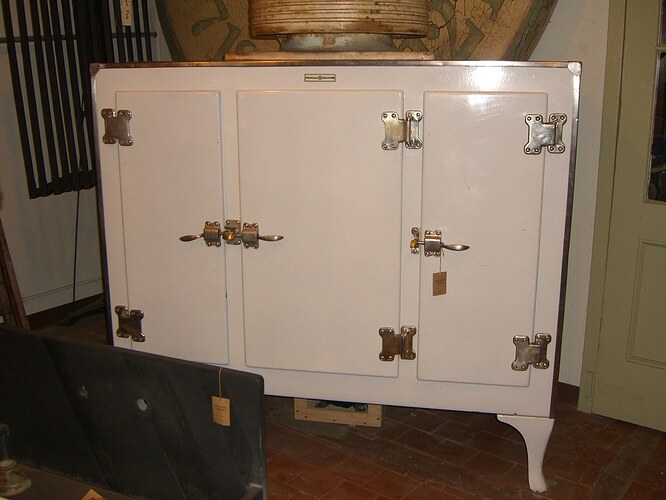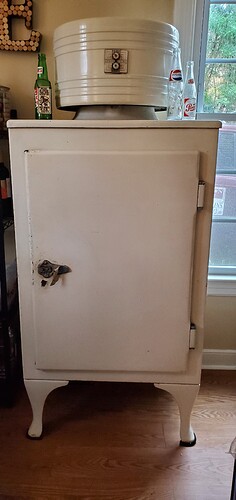My “wine fridge” is a 1935 GE monitor top. The “kitchen fridge” is a modern side by side refrigerator. The numbers have always been like this. Even with a week of vacation with neither being touched the energy consumption remains about doubled for the modern fridge.
Also check out that beautiful waveform on the monitor top!
Definitely not what I was expecting, but you have my attention. It’s incredibly cool you have one of these, and even cooler you have the consumption for it. How were these detected (native device detection or smart plugs?)
I guess this makes sense with all the bells-and-whistles that modern fridges have, but I wouldn’t have guessed it would be operating at about 1/3rd of the overall consumption. You may want to check your fridge consumption against the energy star estimates of consumption.
Also, that waveform is very pretty.
Two questions for you:
-
Can you share daily/zoomed-in view of the waveform from your monitor-top as well?
-
Can data science take a look at your home data to see if everything checks out on our end?
The Monitor top was detected naturally. If I remember it just vomited all of my refrigeration at the same time and told me to figure it out  . Sense doesn’t support any of my smart plugs (yet
. Sense doesn’t support any of my smart plugs (yet  ). It runs for 6 minutes and 6 minutes only. It’s a remarkable machine. It’s been in my family since the day it was bought and it has never had a repair other than a few power cords.
). It runs for 6 minutes and 6 minutes only. It’s a remarkable machine. It’s been in my family since the day it was bought and it has never had a repair other than a few power cords.
And yes you can check out my data for science.
Thanks for this, @Rjenk0s. It looks like consumption is right. Is the wine fridge set to a higher temperature than your side-by-side fridge?
It’s amazing that it’s still operating efficiently at ~80 years old. Here’s a little more insight from our Data Science team.
- Wine fridge (monitor-top): ~ 180W when on. On roughly 1/10 of the hour --> 0.4kwh / day
- Kitchen fridge: ~ 130W when on. Roughly 1/2 of the hour --> 1.5kwh / day
The monitor top uses about 50W more when the motor is on, but the kitchen fridge is on much longer than the wine fridge. If you have any photos of the fridge, it would be awesome to add to our blog!
this makes me wonder how much more/better insulating the older fridge has than the new one…
I dont think its the insulation. It’s all steel stuffed with fiberglass. I just think new components aren’t made with the same quality. There isn’t an electronic on the market today period I would feel confident running 100 years.
Don’t use this picture. I’ll get a better one that’s more suited for publication.
WOW I have an old monitor top too that was my grandparents. For many it was on our back porch as a beer fridge until we remodeled and built a full bar inside with a beverage and wine fridge. Since it’s been stored in our shed, the door seal is shot, the cord insulation is gone and it could use a good paint job. I can’t believe it uses so little power. Now you have me wondering if I could get mine safely up and running again.
The size of a refrigerator makes a difference in energy consumption, even among new models. I’m guessing your kitchen fridge is larger than your wine fridge.
The freezer is another key difference. I have a beverage fridge with out freezer compartment. Such an appliance is expected to use less energy than one which has to produce two temperatures.
For these two reasons, I am not surprised by your data. I am fascinated by it, though. Thanks for sharing about your 80+ year-old refrigerator that still works great!
GE used the same cooling unit for all of the different size refrigerators. I wouldn’t be surprised to see similar numbers with that one too.
Here are the pictures that can be published. You are welcomed to post her data as well. It’s in a bit of a junk room right now, but we have plans to make the room around it eventually. Lots of stories around this thing including how I wasn’t allowed to touch it for most of my childhood. My uncle broke the handle off of it when he was a kid.









